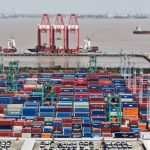
How Can Asia-Pacific Nations Hold Back Climate Change?
By Zahid Hasan
The Asia-Pacific region, home to more than half of the world’s population and some of its fastest-growing economies, stands at a crossroads in the battle against climate change. Rising sea levels, extreme heatwaves, and stronger tropical cyclones are already hitting the region harder than most, forcing governments to confront an urgent question: how to hold back the worsening climate crisis.
Experts say that while the region contributes significantly to global greenhouse gas emissions, it also has some of the world’s greatest potential for climate solutions. The United Nations Economic and Social Commission for Asia and the Pacific (UNESCAP) stresses that regional cooperation, clean energy investment, and stronger climate adaptation measures are key to reducing future risks.
1. Transitioning to Clean Energy
Coal remains a dominant energy source for several Asia-Pacific nations, including China, India, and Indonesia. Experts suggest that rapid investment in renewable energy—solar, wind, and hydro—could drastically cut emissions. Countries like Japan and South Korea have already pledged net-zero targets by 2050, while China aims for carbon neutrality by 2060.
2. Strengthening Regional Cooperation
Climate change does not respect borders. Collaborative projects such as cross-border renewable energy grids, joint disaster preparedness initiatives, and knowledge-sharing platforms could accelerate climate action across the region.
3. Enhancing Adaptation Measures
From building climate-resilient infrastructure to improving early warning systems for floods and storms, adaptation is as important as mitigation. Small island nations in the Pacific, such as Fiji and Tuvalu, are already leading global discussions on climate resilience due to their frontline exposure to sea-level rise.
4. Mobilizing Climate Finance
Developing nations in the Asia-Pacific often lack sufficient funds to invest in climate solutions. International financial support, along with innovative funding mechanisms like green bonds, can help bridge the gap.
The stakes are high. Without decisive action, the World Bank warns that climate change could push tens of millions of people in the region into poverty by 2050. But with political will, technological innovation, and regional solidarity, Asia-Pacific nations have the power to slow the pace of climate change—and protect both their people and the planet.






![Pakistan accuses the TTP of carrying out attacks on its territory and the Afghan Taliban government of harbouring the group [File: Fayaz Aziz/Reuters]](https://asiandiplomacy.com/wp-content/uploads/2025/10/2023-02-27T041341Z_1777986366_RC2O7Z9GI1FB_RTRMADP_3_PAKISTAN-BLAST-POLICE-1760256429-150x150.webp)